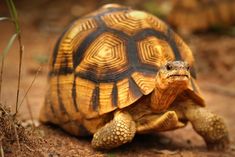DỊCH HOÀN THIỆN ĐỀ THI IELTS READING VÀ GIẢI THÍCH ĐÁP ÁN:
Flying Tortoises
An airborne reintroduction programme has helped conservationists take significant steps to protect the endangered Galapagos tortoise.
Một chương trình tái du nhập bằng đường hàng không đã giúp các nhà bảo tồn thực hiện các bước quan trọng để bảo vệ loài rùa Galapagos đang bị đe dọa tuyệt chủng.
A
Forests of spiny cacti cover much of the uneven lava plains that separate the interior of the Galapagos island of Isabela from the Pacific Ocean. With its five distinct volcanoes, the island resembles a lunar landscape. Only the thick vegetation at the skirt of the often cloud-covered peak of Sierra Negra offers respite from the barren terrain below.
Những khu rừng xương rồng gai bao phủ phần lớn đồng bằng dung nham không bằng phẳng ngăn cách nội địa của đảo Isabela ở Galapagos với Thái Bình Dương. Với năm ngọn núi lửa riêng biệt, hòn đảo giống như một cảnh quan trên mặt trăng. Chỉ có thảm thực vật dày ở rìa của đỉnh Sierra Negra thường bị mây che phủ mới mang lại cảm giác thư thả, nghỉ ngơi từ địa hình cằn cỗi bên dưới.
This inhospitable environment is home to the giant Galapagos tortoise. Some time after the Galapagos’s birth, around five million years ago, the islands were colonised by one or more tortoises from mainland South America. As these ancestral tortoises settled on the individual islands, the different populations adapted to their unique environments, giving rise to at least 14 different subspecies. Island life agreed with them. In the absence of significant predators, they grew to become the largest and longest-living tortoises on the planet, weighing more than 400 kilograms, occasionally exceeding 1,8 metres in length and living for more than a century.
Môi trường khắc nghiệt này là nhà của loài rùa khổng lồ Galapagos. Một thời gian sau khi Galapagos ra đời, khoảng năm triệu năm về trước, những hòn đảo có một hoặc nhiều con rùa từ đất liền Nam Mỹ định cư. Khi những con rùa tổ tiên này định cư trên những hòn đảo riêng lẻ, các quần thể dân số khác nhau đã thích nghi với môi trường đặc biệt của chúng, tạo ra ít nhất 14 loài phụ khác nhau. Cuộc sống trên đảo phù hợp với chúng. Sự vắng mặt của những loài săn mồi quan trọng, chúng lớn lên trở thành loài rùa sống lâu nhất và lớn nhất trên hành tinh, nặng hơn 400kg, đôi khi dài hơn 1,8m và sống hơn một thế kỷ.
B
Before human arrival, the archipelago's tortoises numbered in the hundreds of thousands. From the 17th century onwards, pirates took a few on board for food, but the arrival of whaling ships in the 1790s saw this exploitation grow exponentially. Relatively immobile and capable of surviving for months without food or water, the tortoises were taken on board these ships to act as food supplies during long ocean passages. Sometimes, their bodies were processed into high-grade oil.
Trước khi con người xuất hiện, những con rùa cạn của quần đảo có số lượng là hàng trăm ngàn. Từ thế kỷ 17 trở đi, cướp biển đã mang một vài con lên tàu để ăn nhưng sự xuất hiện của các tàu săn cá voi vào những năm 1790 đã chứng kiến sự khai thác này phát triển theo cấp hàm mũ. Tương đối bất động và có khả năng sống sót trong vòng vài tháng mà không cần nước và thức ăn, những con rùa cạn được mang lên những con tàu này có vai trò như nguồn cung cấp thức ăn trong suốt hành trình đi biển dài. Đôi khi, cơ thể chúng được chế biến thành dầu cao cấp.
In total, an estimated 200,000 animals were taken from the archipelago before the 20th century. This historical exploitation was then exacerbated when settlers came to the islands. They hunted the tortoises and destroyed their habitat to clear land for agriculture. They also introduced alien species - ranging from cattle, pigs, goats, rats and dogs to plants and ants - that either prey on the eggs and young tortoises or damage or destroy their habitat.
Tổng cộng, một ước tính 200.000 động vật đã bị mang từ quần đảo trước thế kỷ 20. Sự khai thác lịch sử này đã trở nên trầm trọng hơn khi những người định cư đến đảo. Họ săn những con rùa trên cạn và phá hủy môi trường sống của chúng để làm sạch đất cho nông nghiệp. Họ cũng du nhập những loài lạ từ cừu, lợn, dê, chuột và chó đến các loài cây trồng và kiến có thể ăn trứng và cả những con rùa con hoặc phá hủy hoặc tàn phá môi trường sống của chúng.
C
Today, only 11 of the original subspecies survive and of these, several are highly endangered. In 1989, work began on a tortoise-breeding centre just outside the town of Puerto Villamil on Isabela, dedicated to protecting the island’s tortoise populations. The centre’s captive-breeding programme proved to be extremely successful, and it eventually had to deal with an overpopulation problem.
Ngày nay, chỉ có 11 trong số các loài ban đầu còn sống và trong số này, một vài con có nguy cơ tuyệt chủng cao. Vào năm 1989, công việc bắt đầu ở một trung tâm nhân giống rùa bên ngoài thị trấn của Pierto Villa trên Isabela, chuyên bảo vệ những quần thể rùa trên cạn của hòn đảo. Chương trình nuôi nhốt nhân giống của trung tâm tỏ ra cực kỳ thành công và cuối cùng nó phải giải quyết vấn đề dân số quá đông.
D
The problem was also a pressing one. Captive-bred tortoises can’t be reintroduced into the wild until they’re at least five years old and weigh at least 4,5 kilograms, at which point their size and weight - and their hardened shells - are sufficient to protect them from predators. But if people wait too long after that point, the tortoises eventually become too large to transport.

1. Mua bộ đề gần 400 bài ielts reading - Dịch và giải chi tiết Chỉ 199k bao gồm toàn bộ đề trong bộ Cambridge ( từ bộ 1 -19) và nhiều đề thi thực tế ( xem danh sách 400 đề ielts reading tại đây). Xem bài mẫu tại đây, Bài mẫu 1, bài mẫu 2, bài mẫu 3. Giải đề bao gồm phần dịch bài đọc, dịch phần câu hỏi, giải thích chi tiết, ( chỉ có thể tải, in phần đề để luyện tập, phần giải chi tiết và dịch chỉ xem online).
>>>>>>> Đặc biệt tặng kèm Dịch và giải chi tiết bộ đề Ielts listening từ Cam 10-18 và tặng kèm hơn 300 đề Ielts thực tế ( không có lời giải chi tiết chỉ có đề và đáp án) ( khác với bộ 400 đề ở trên). Vui lòng điền thông tin theo form tại đây và thanh toán theo thông tin CK trong form.
2. Đặc biệt dành tặng 100 bạn hoàn thành buổi học thử miễn phí khóa học Ielts Speaking online 1 kèm 1, các bạn sẽ được tặng bộ đề 400k bài Ielts reading và bộ đề Ielts Listening bộ Cam từ 10-18 gồm bài dịch và giải chi tiết, giải thích từ vựng khó ( thời hạn sử dụng trong vòng 2 tháng). Xem thông tin khóa học Ielts Speaking online 1 kèm 1 và đăng ký học thử tại đây.
E
For years, repatriation efforts were carried out in small numbers, with the tortoises carried on the backs of men over weeks of long, treacherous hikes along narrow trails. But in November 2010, the environmentalist and Galapagos National Park liaison officer Godfrey Merlin, a visiting private motor yacht captain and a helicopter pilot gathered around a table in a small cafe in Puerto Ayora on the island of Santa Cruz to work out more ambitious reintroduction. The aim was to use a helicopter to move 300 of the breeding centre’s tortoises to various locations close to Sierra Negra.
F
This unprecedented effort was made possible by the owners of the 67-metre yacht White Cloud, who provided the Galapagos National Park with free use of their helicopter and its experienced pilot, as well as the logistical support of the yacht, its captain and crew. Originally an air ambulance, the yacht’s helicopter has a rear double door and a large internal space that’s well suited for cargo, so a custom crate was designed to hold up to 33 tortoises with a total weight of about 150 kilograms. This weight, together with that of the fuel, pilot and four crew, approached the helicopter’s maximum payload, and there were times when it was clearly right on the edge of the helicopter’s capabilities. During a period of three days, a group of volunteers from the breeding centre worked around the clock to prepare the young tortoises for transport. Meanwhile, park wardens, dropped off ahead of time in remote locations, cleared landing sites within the thick brush, cacti and lava rocks.
G
Upon their release, the juvenile tortoises quickly spread out over their ancestral territory, investigating their new surroundings and feeding on the vegetation. Eventually, one tiny tortoise came across a fully grown giant who had been lumbering around the island for around a hundred years. The two stood side by side, a powerful symbol of the regeneration of an ancient species.
>>>>> Xem thêm:
♦ Tổng hợp câu trả lời, câu hỏi, từ vựng của hơn 70 chủ đề Ielts Speaking part 1
♦ Tổng hợp gần 400 đề thi Ielts reading ( bao gồm dịch, giải chi tiết, từ vựng)
Questions 1-7
Reading Passage 230 has seven paragraphs, A-G.
Choose the correct heading for each paragraph from the list of headings below.
Write the correct number, i-viii, in boxes 1-7 on your answer sheet.
1. Paragraph A
2. Paragraph B
3. Paragraph C
4. Paragraph D
5. Paragraph E
6. Paragraph F
7. Paragraph G
List of Headings
i. The importance of getting the timing right
ii. Young meets old
iii. Developments to the disadvantage of tortoise
populations
iv. Planning a bigger idea
v. Tortoises populate the islands
vi. Carrying out a carefully prepared operation
vii. Looking for a home for the islands’ tortoises
viii. The start of the conservation project
Questions 8-13
Complete the notes below.
Choose ONE WORD ONLY from the passage for each answer.
Write your answers in boxes 8-13 on your answer sheet.
The decline of the Galapagos tortoise
• Originally from mainland South America
• Numbers on Galapagos islands increased, due to lack of predators
• 17th century: small numbers taken onto ships used by 8 .................
• 1790s: very large numbers taken onto whaling ships, kept for 9 ................. and also used to produce 10 .................
• Hunted by 11 ................. on islands
• Habitat destruction: for the establishment of agriculture and by various 12 ................. not native to the islands, which also fed on baby tortoises and tortoises’ 13 .................
ĐÁP ÁN, GIẢI CHI TIẾT và DỊCH HOÀN THIỆN ĐỀ THI IELTS READING:
Flying Tortoises
Questions 1-7
Reading Passage 230 has seven paragraphs, A-G.
Choose the correct heading for each paragraph from the list of headings below.
Write the correct number, i-viii, in boxes 1-7 on your answer sheet.
1. Paragraph A/ v. Tortoises populate the islands
Giải thích:
This inhospitable environment is home to the giant Galapagos tortoise. Some time after the Galapagos’s birth, around five million years ago, the islands were colonised by one or more tortoises from mainland South America. As these ancestral tortoises settled on the individual islands, the different populations adapted to their unique environments, giving rise to at least 14 different subspecies.
2. Paragraph B/ iii. Developments to the disadvantage of tortoise populations
Giải thích:
From the 17th century onwards, pirates took a few on board for food, but the arrival of whaling ships in the 1790s saw this exploitation grow exponentially.
In total, an estimated 200,000 animals were taken from the archipelago before the 20th century. This historical exploitation was then exacerbated when settlers came to the islands. They hunted the tortoises and destroyed their habitat to clear land for agriculture. They also introduced alien species - ranging from cattle, pigs, goats, rats and dogs to plants and ants - that either prey on the eggs and young tortoises or damage or destroy their habitat.
3. Paragraph C/ viii. The start of the conservation project
Giải thích:
In 1989, work began on a tortoise-breeding centre just outside the town of Puerto Villamil on Isabela, dedicated to protecting the island’s tortoise populations.
4. Paragraph D/ i. The importance of getting the timing right
Giải thích:
Captive-bred tortoises can’t be reintroduced into the wild until they’re at least five years old and weigh at least 4,5 kilograms, at which point their size and weight - and their hardened shells - are sufficient to protect them from predators. But if people wait too long after that point, the tortoises eventually become too large to transport.
Questions 8-13
Complete the notes below.
Choose ONE WORD ONLY from the passage for each answer.
Write your answers in boxes 8-13 on your answer sheet.
The decline of the Galapagos tortoise
Sự suy giảm của rùa Galapagos
• Originally from mainland South America
Có nguồn gốc từ lục địa Nam Mỹ
• Numbers on Galapagos islands increased, due to lack of predators
Số lượng trên các hòn đảo Galapagos tăng lên do vắng loài săn mồi
• 17th century: small numbers taken onto ships used by 8 .....pirates............
Thế kỷ 17: số lượng nhỏ được mang lên tàu được sử dụng bởi cướp biển
Giải thích: Đoạn B
From the 17th century onwards, pirates took a few on board for food, but the arrival of whaling ships in the 1790s saw this exploitation grow exponentially.
• 1790s: very large numbers taken onto whaling ships, kept for 9 ..food ............... and also used to produce 10 ...... oil...........
Những năm 1790: số lượng rất lớn được mang lên tàu, được giữ lại làm thức ăn và cũng được dùng để tạo ra dầu
Giải thích: Đoạn B
but the arrival of whaling ships in the 1790s saw this exploitation grow exponentially. Relatively immobile and capable of surviving for months without food or water, the tortoises were taken on board these ships to act as food supplies during long ocean passages. Sometimes, their bodies were processed into high- grade oil.
Answer:
1. v
2. iii
3. viii
4. i
5. iv
6. vi
7. ii
8. pirates
9. food
10. oil
11. settlers
12. species
13. eggs
1. Mua bộ đề gần 400 bài ielts reading - Dịch và giải chi tiết Chỉ 199k bao gồm toàn bộ đề trong bộ Cambridge ( từ bộ 1 -18) và nhiều đề thi thực tế ( xem danh sách 400 đề ielts reading tại đây). Xem bài mẫu tại đây, Bài mẫu 1, bài mẫu 2, bài mẫu 3. Giải đề bao gồm phần dịch bài đọc, dịch phần câu hỏi, giải thích chi tiết, ( chỉ có thể tải, in phần đề để luyện tập, phần giải chi tiết và dịch chỉ xem online).
>>>>>>> Đặc biệt tặng kèm Dịch và giải chi tiết bộ đề Ielts listening từ Cam 10-18 và tặng kèm hơn 300 đề Ielts thực tế ( không có lời giải chi tiết chỉ có đề và đáp án) ( khác với bộ 400 đề ở trên). Vui lòng điền thông tin theo form tại đây và thanh toán theo thông tin CK trong form.
2. Đặc biệt dành tặng 100 bạn hoàn thành buổi học thử miễn phí khóa học Ielts Speaking online 1 kèm 1, các bạn sẽ được tặng bộ đề 400k bài Ielts reading và bộ đề Ielts Listening bộ Cam từ 10-18 gồm bài dịch và giải chi tiết, giải thích từ vựng khó ( thời hạn sử dụng trong vòng 2 tháng). Xem thông tin khóa học Ielts Speaking online 1 kèm 1 và đăng ký học thử tại đây.

.png)

.jpg)




